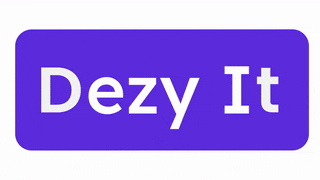
Introduction
Long patient wait times have been a persistent challenge in the UK’s healthcare system, including in plastic surgery and aesthetic clinics. According to the NHS Digital 2024 report, average wait times for elective procedures, including cosmetic surgeries, have increased due to staff shortages and administrative inefficiencies.
AI-powered tools are now addressing this issue by optimizing patient scheduling, streamlining triage, and automating administrative processes. This blog explores how AI is revolutionizing patient flow and reducing wait times in UK clinics.
1. AI-Optimized Appointment Scheduling
One of the biggest contributors to long wait times is inefficient appointment scheduling. AI-powered scheduling algorithms, such as those used in platforms like Zocdoc and Doctify, are helping clinics:
Automatically assign optimal appointment slots based on patient history, procedure type, and surgeon availability
Predict cancellations and no-shows by analyzing historical data and sending automated reminders
Offer real-time appointment rescheduling to fill last-minute cancellations efficiently
A 2024 study in BMJ Health & Care Informatics found that AI-based scheduling tools reduced appointment gaps by 40%, leading to a more efficient patient flow.
2. AI in Virtual Triage and Pre-Consultation Assessments
Long wait times often stem from unnecessary in-person visits that could be handled remotely. AI-powered virtual triage tools, such as Babylon Health and Ada Health, help clinics:
Assess patient symptoms through conversational AI and chatbot interactions
Direct urgent cases to the appropriate specialist while scheduling routine cases for later
Reduce the number of unnecessary face-to-face consultations by handling simple inquiries online
By integrating AI into triage, clinics can prioritize high-need patients, reducing congestion in waiting rooms and shortening consultation times.
3. AI-Assisted Documentation and Medical Scribing
A major bottleneck in clinics is the time clinicians spend on administrative work. AI-powered medical scribing tools, such as Suki AI and DeepScribe, are now:
Automatically transcribing patient consultations into electronic health records (EHRs)
Reducing the need for manual note-taking, allowing doctors to focus more on patient care
Speeding up post-appointment documentation, leading to faster patient turnaround
By using AI-driven documentation tools, clinics have reported a 30% reduction in consultation times, leading to increased daily patient capacity.
4. AI in Predictive Staffing and Workflow Management
AI-driven workforce management tools, such as Qventus and HealthRoster, help clinics:
Predict peak hours and adjust staffing accordingly to prevent bottlenecks
Optimize workflow distribution by assigning tasks more efficiently to staff members
Identify inefficiencies in patient flow, allowing for real-time adjustments
These tools have helped some UK clinics reduce patient processing times by 25%, ensuring smoother operations.
5. AI-Powered Chatbots for Patient Queries
Administrative teams often face high volumes of patient inquiries, leading to delays in appointment scheduling and responses. AI-powered chatbots, such as ChatGPT for healthcare and Molly by Sensely, provide:
Instant answers to common patient queries (e.g., pricing, procedure details, recovery time)
Automated pre-consultation screening, ensuring only necessary cases reach human staff
24/7 availability, reducing call wait times and administrative workload
This results in faster patient service and fewer delays caused by overwhelmed reception staff.
Conclusion
AI-powered tools are playing a crucial role in reducing patient wait times in UK clinics by optimizing appointment scheduling, streamlining triage, automating documentation, and improving workflow efficiency. As AI technology continues to evolve, its integration into healthcare systems will further enhance patient experiences while reducing operational burdens on clinics.
For plastic surgery and aesthetic clinics, adopting AI-driven solutions is no longer optional—it’s essential to remain competitive, efficient, and patient-focused.
Learn More:


Comments